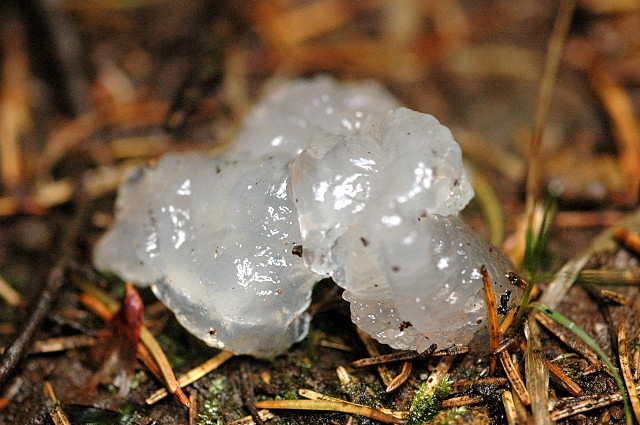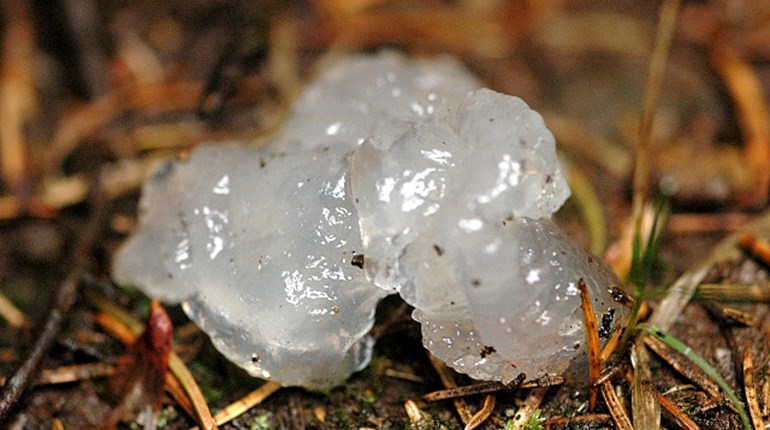
If you spend enough time in the outdoors, and in the right (or wrong!) places, sooner or later, you'll see something weird. Something crazy. Something that may at first seem to defy explanation. However mysterious Nature can appear to be, however, there's always an explanation...if you can find it. Here are five very strange things that only outdoorspeople get to see outdoors.
1. Star Jelly
It’s slime! It’s vom! It’s frog eggs! No! It’s Star Jelly! Oh...no wait, it is slime, puke or frog eggs. Star jelly, or a gooey substance many believe comes from meteors that have fallen after a shower, exists as an enduring myth. People often mistake various goos, foams and jellies for star jelly after a meteor shower, because the jelly in question is just so darn strange it can’t be from this planet. Well, if they looked at that same lump of goo, foam or jelly at a different time sans meteor shower their reaction would simply be, “Eww, what animal puked that up?” Learn more here: https://www.youtube.com/watch?v=1N74-kx8U_w
2. Death Valley’s “Sailing Stones”
It’s been one of the most interesting mysteries of Death Valley: The “sailing stones” at Racetrack Playa. Hikers who pass through will see rocks followed by zigzagging trails all around. Somehow the stones move across the playa (or dry lake bed) and cut their tracks into the sediment as they progress. For decades no one knew what caused this, but after years of monitoring scientists think they found a reason…https://www.youtube.com/watch?v=UnAXKuX1Q-c
3. Aaaah! Snake Mating Ball
Spring showers bring April flowers and spring breeding brings mouths for feeding. Come spring-time, when snakes emerge from hibernation, they will be ready to mate in a ratio of one female to about 100 males. The male snakes swarm the female and create a mating ball. Since the odds are never in the favor for the males, some have developed “tricks” to better their chances. In a possible attempt to lure away other males, a “she-male” snake is a male that will secrete female scents away from the hibernation den. The other males will then follow the pseudo-female scent while the “she-male” snake returns to a waking lady. What trickery!
What soon becomes an amorphous blob of scales and tails unleashes a visceral reaction for viewers and maybe even empathy for the coveted female snake, but it’s not a sight you’ll see any ol’ place. It’ll be during your spring hike, while you’re waking up your stiff winter joints, when you’ll stumble across the ball of love. https://www.youtube.com/watch?v=FStzMBnWofE
4. Ball Lightning
While we admit that this phenomenon can be, and has been, experienced in many urban environments, the lack of light pollution you get from being miles away really gives this experience the awe it deserves. What is ball lightning? It’s a floating sphere of light that occurs during lightning storms; a rare occurrence. It’s the how and why scientists can’t explain. “Nobody knows what ball lightning is. Understanding normal lightning is difficult enough, but ball lightning is something entirely different,” says a The Weather Channel representative. These orbs of light have been seen by thousands all over the world! The next time a lightning storm comes your way find a safe place—and watch out for ball lightning! https://www.youtube.com/watch?v=4XRzD-2iuGU
5. “Extinct” Critters
“Life finds a way,” Jeff Goldblum’s character foreshadowed in the 1993 film Jurassic Park. While he was referring to an island of all-female dinosaurs, his line rang true six years later in Louisiana. At the time the ivory-billed woodpecker had been deemed “extinct”; it’s the third-largest woodpecker in the world and boasts a beautiful white bill and feathers. After the Civil War, the lumber industry boomed, and the great trees of the bottomland forests that once shadowed the southern delta regions, where the ivory-billed woodpecker called home, were in the line of fire. Trees are very important to the lives of birds; it’s where they nest, find protection, and for the ivory-billed woodpecker, it’s where they found their only source of food—beetle larvae. By the 1940s there were no trees left in the bottomland forests and nowhere for the woodpecker to live, hide or eat, ergo it became extinct. That all changed in 1999 when David Kulivan decided to go turkey hunting. Waiting patiently, clad in camo, the LSU forestry student noticed a pair of ivory-billed woodpeckers. “I was dressed in camo from head to toe and sitting against a tree…They never knew I was there,” Kulivan said. He really brought something home from that hunt that day.
https://www.youtube.com/watch?v=QkIoS1E61PY





































